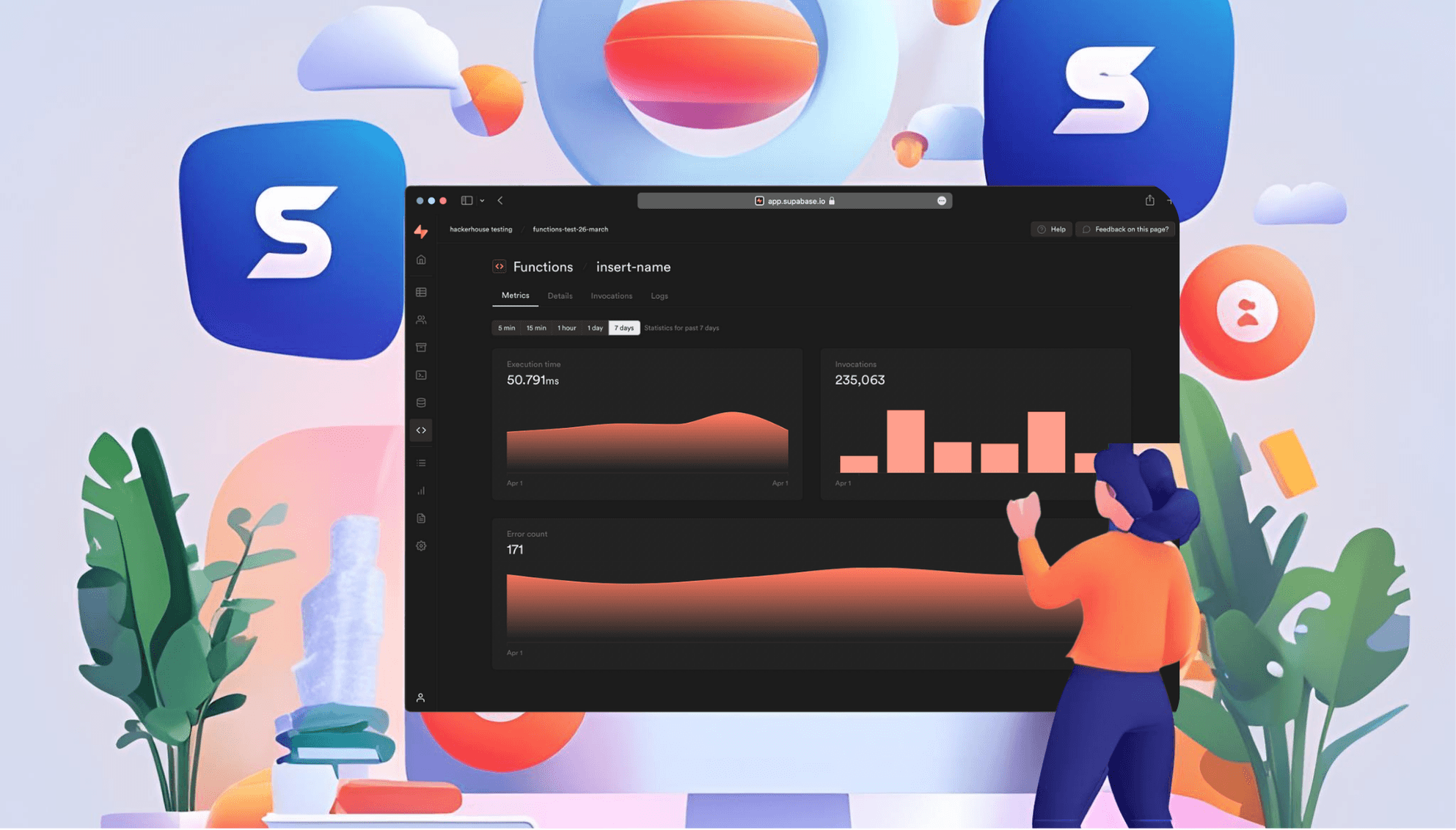Supabase + Next.js : A Powerful Fullstack Pairing

Table Of Content
- What is Supabase (in simple terms)?
- Why Pair Supabase with Next.js?
- Setting Up Supabase in a Next.js App
- Using Supabase Auth with Next.js
- Querying Data (from DB Table)
- Server-Side Supabase Queries (Next.js API Routes)
- File Storage Example
- Calling a Supabase Function via RPC
- Supabase Edge Functions + Next.js
- Final Tips
- Resources
Supabase has quickly become a developer favorite for building fullstack apps with modern tools. If you're coming from Firebase, PostgreSQL, or simply want a faster way to ship projects with authentication, databases, and serverless functions — Supabase paired with Next.js is a dream combo.
What is Supabase (in simple terms)?
Think of Supabase as an open-source alternative to Firebase — but built on PostgreSQL, which gives you more control and flexibility.
It provides:
- A fully-managed PostgreSQL database
- Built-in authentication (email/password, OAuth, magic links)
- Edge functions for running backend logic
- Realtime updates via websockets
- Storage for files (images, docs, etc.)
- A slick dashboard and instant REST/GraphQL APIs
Official site: https://supabase.com
Why Pair Supabase with Next.js?
Next.js brings SSR (server-side rendering), API routes, and an excellent DX (developer experience) to the frontend. Together, they form a:
- Fullstack framework: database + API + frontend in one
- Fast prototyping setup: auth, DB, UI — all in minutes
- Ideal for SaaS, dashboards, internal tools, etc.
Setting Up Supabase in a Next.js App
Step 1: Install Supabase Client
npm install @supabase/supabase-jsStep 2: Create a Supabase Project
- Go to https://app.supabase.com
- Click "New Project"
- Set project name, password, region
- Copy the project URL and anon/public API key from the settings
Step 3: Initialize Supabase in Your App
Create a file: lib/supabaseClient.js
import { createClient } from '@supabase/supabase-js';
const supabaseUrl = process.env.NEXT_PUBLIC_SUPABASE_URL;
const supabaseAnonKey = process.env.NEXT_PUBLIC_SUPABASE_ANON_KEY;
export const supabase = createClient(supabaseUrl, supabaseAnonKey);Update your .env.local:
NEXT_PUBLIC_SUPABASE_URL=https://xyzcompany.supabase.co
NEXT_PUBLIC_SUPABASE_ANON_KEY=your_anon_key_hereUsing Supabase Auth with Next.js
Let’s build a simple login/signup form.
// pages/login.js
import { supabase } from '../lib/supabaseClient';
import { useState } from 'react';
export default function LoginPage() {
const [email, setEmail] = useState('');
const handleLogin = async () => {
const { error } = await supabase.auth.signInWithOtp({ email });
if (error) alert(error.message);
else alert('Check your email for login link');
};
return (
<div>
<input type="email" onChange={e => setEmail(e.target.value)} />
<button onClick={handleLogin}>Send Magic Link</button>
</div>
);
}For persistent auth, wrap your app in a
SessionContextProviderusing Supabase’s@supabase/auth-helpers-nextjs:
npm install @supabase/auth-helpers-nextjsWrap your _app.js:
import { SessionContextProvider } from '@supabase/auth-helpers-react';
import { supabase } from '../lib/supabaseClient';
function MyApp({ Component, pageProps }) {
return (
<SessionContextProvider supabaseClient={supabase} initialSession={pageProps.initialSession}>
<Component {...pageProps} />
</SessionContextProvider>
);
}
export default MyApp;Querying Data (from DB Table)
Let’s fetch all rows from a todos table:
const { data, error } = await supabase.from('todos').select('*');Insert new record:
await supabase.from('todos').insert({ title: 'Learn Supabase', completed: false });Realtime subscription:
supabase.channel('todos-changes')
.on('postgres_changes', { event: '*', schema: 'public', table: 'todos' }, (payload) => {
console.log('Change received!', payload);
})
.subscribe();Server-Side Supabase Queries (Next.js API Routes)
// pages/api/todos.js
import { supabase } from '../../lib/supabaseClient';
export default async function handler(req, res) {
const { data, error } = await supabase.from('todos').select('*');
if (error) return res.status(500).json({ error });
res.status(200).json({ todos: data });
}File Storage Example
const { data, error } = await supabase.storage.from('avatars').upload('user1.png', file);List uploaded files:
const { data } = await supabase.storage.from('avatars').list();Calling a Supabase Function via RPC
Let’s say you created a PostgreSQL function called increment like so:
-- SQL in Supabase SQL Editor
create or replace function increment(slug_text text)
returns void as $$
begin
update posts set views = views + 1 where slug = slug_text;
end;
$$ language plpgsql;You can call it directly from your Next.js frontend:
const incrementView = async () => {
const { data, error } = await supabase.rpc('increment', { slug_text: 'hello-world' });
if (error) console.error('Error calling function:', error);
else console.log('View incremented!');
};Use this pattern for tracking views, likes, counters, or any backend-side mutation that should remain secure.
Supabase Edge Functions + Next.js
Use them when you need fast, server-side logic close to your users.
Docs: https://supabase.com/docs/guides/functions
Final Tips
- Supabase Auth = super fast MVP-ready login
- Realtime is great for dashboards, chat apps, games
- Use RLS (Row-Level Security) for access control
- Consider Prisma or Drizzle with Supabase for advanced DB typesafety
- Dashboard SQL Editor is awesome for schema changes
Resources
- 🔗 Supabase Docs: https://supabase.com/docs
- 🔗 Supabase GitHub: https://github.com/supabase/supabase
- 🔗 Supabase + Next.js guide: https://supabase.com/docs/guides/with-nextjs
Supabase + Next.js is a match made for productivity. Whether you’re building an internal tool, SaaS, or side project — you get speed, scalability, and a great developer experience with minimal setup.
